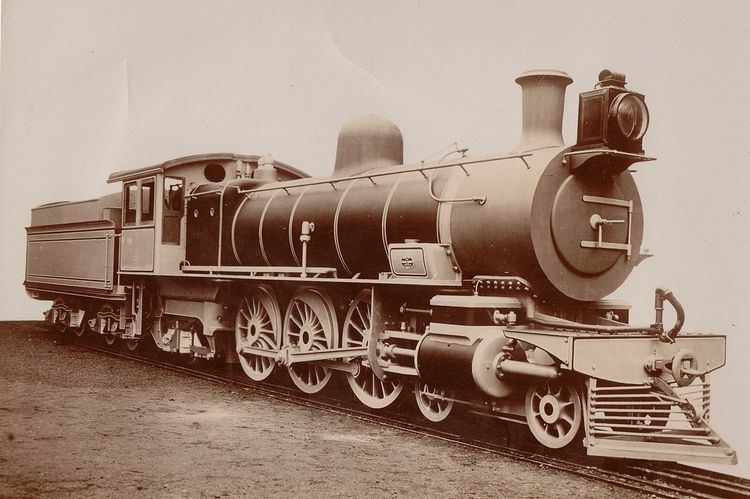Works no. RS D1540/1-D1540/12 Configuration 2-axle bogies | In service 1904-1912 | |
 | ||
Locomotive CSAR Class 10CSAR Class 10-2 SaturatedCSAR Class 10-2 SuperheatedCSAR Class 11SAR Class 5 Builder Beyer, Peacock and CompanyNorth British Locomotive CompanyRobert Stephenson and CompanyVulcan Foundry | ||
The South African type XM2 tender was a steam locomotive tender from the pre-Union era in Transvaal.
Contents
The Type XM2 tender entered service in 1904, as tenders to the Class 10 4-6-2 Pacific type and Class 11 2-8-2 Mikado type steam locomotives which were acquired by the Central South African Railways in that year. In 1912, both locomotive types retained their Class designations on the South African Railways.
Manufacturers
Type XM2 tenders were built between 1904 and 1912 by Beyer, Peacock and Company, North British Locomotive Company and Vulcan Foundry. More Type XM2 tenders were subsequently ordered from Robert Stephenson and Company.
The Central South African Railways (CSAR) placed 15 Class 10 Pacific type and 36 Class 11 Mikado type locomotives in service in 1904. Both locomotives and the tender were designed by P.A. Hyde, Chief Locomotive Superintendent of the CSAR.
The Type XM2 first entered service as tenders to these two locomotive Classes. The Class 10 was acquired to work the passenger trains on the Natal and Cape mainlines out of Johannesburg, while the Class 11 entered service on the Reef to haul coal between Germiston and Witbank.
Characteristics
The tender had a coal capacity of 10 long tons (10.2 tonnes) and a water capacity of 4,000 imperial gallons (18,200 litres), with a maximum axle load of 12 long tons 11 hundredweight (12,750 kilograms).
Locomotives
In the South African Railways (SAR) years, tenders were numbered for the engines they were delivered with. In most cases, an oval number plate, bearing the engine number and tender type, would be attached to the rear end of the tender. During the classification and renumbering of locomotives onto the SAR roster in 1912, no separate classification and renumbering list was published for tenders, which should have been renumbered according to the locomotive renumbering list.
Five locomotive classes were delivered new with Type XM2 tenders. Bearing in mind that tenders could and did migrate between engines, these tenders should have been renumbered in the SAR number ranges as shown.
Soon after entering service in 1910, the CSAR Class 10-C light Pacific locomotives, acquired for suburban working, were found to be capable of handling mainline passenger trains. To better equip them for mainline working, an order for twelve new Type XM2 tenders for these engines was placed with Robert Stephenson and Company. Since their original smaller Type XC tenders were already numbered for their respective engines, these new tenders, with Robert Stephenson works numbers D1540/1 to D1540/12, were numbered in the non-revenue earning range from N1 to N12.
In addition, 24 more spare Type XM2 tenders were subsequently acquired by the SAR, numbered in the range from N13 to N36.
Classification letters
Since many tender types are interchangeable between different locomotive classes and types, a tender classification system was adopted by the SAR. The first letter of the tender type indicates the classes of engines to which it could be coupled. The "X_" tenders could be used with the following locomotive classes:
The second letter indicates the tender's water capacity. The "_M" tenders had a capacity of 4,000 imperial gallons (18,200 litres; 4,800 US gallons).
A number, when added after the letter code, indicates differences between similar tender types, such as function, wheelbase or coal bunker capacity.
Modification
The original slatted upper sides of the Type XM2 tender's coal bunker were soon replaced by sheet-metal sides. Some later models of the Type XM2 tender were built new with such sheet-metal upper sides to the coal bunker. An example is the 1912 version of the tender, as delivered with the SAR Class 5 locomotives in 1912.
